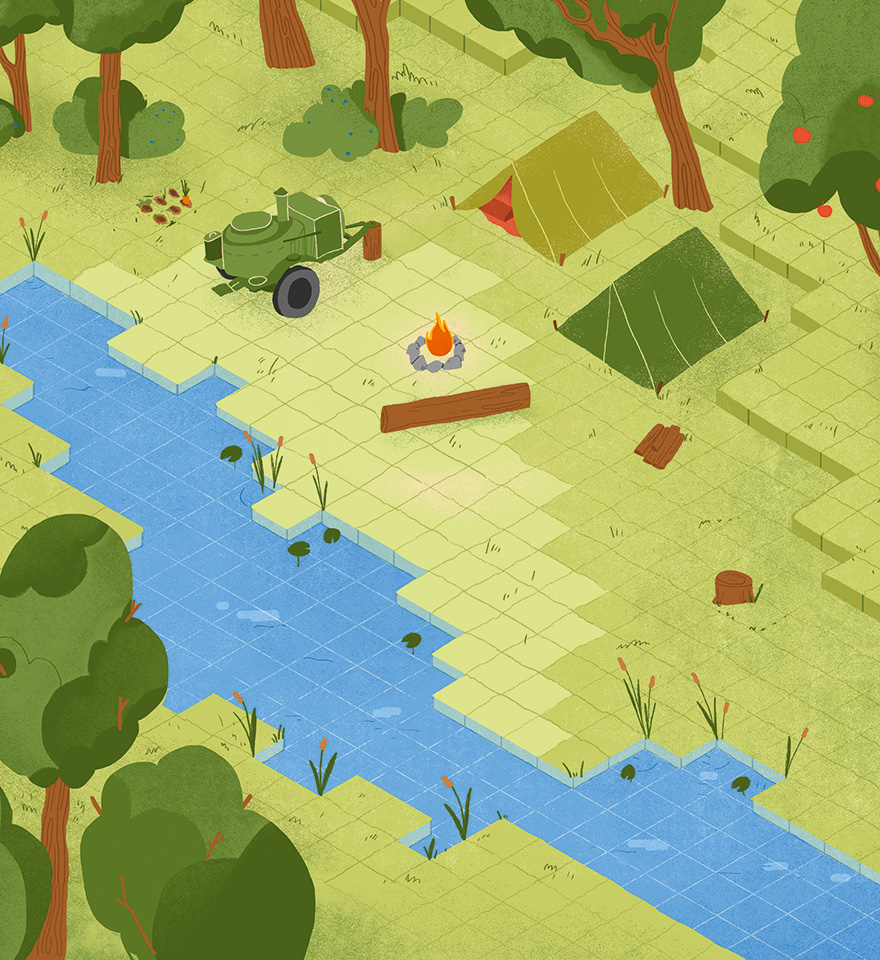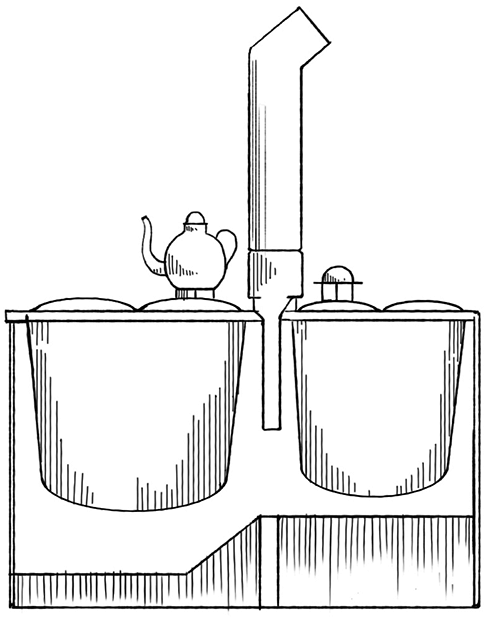TurchanovychAnton
January 29, 1854, Kozeletskyi Povit, Russian Empire (now Chernihiv Oblast, Ukraine) —
1943, Bratslav, USSR (now Bratslav, Vinnytsia Oblast, Ukraine)
Field kitchen
The military’s diet is a science. Today, almost every country has research centers that study the dietary habits of the military, calculate the daily rate of calories depending on the tasks performed by soldiers of certain units, develop dozens of menus with a balanced content of proteins, fats, and carbohydrates, and look for new ways of long-term storage of products. Still, it was not always like this.

For example, Roman legionnaires were given grain and hand mills. During the halts, they milled grain into flour and baked bread on coal. When the military stayed in military camps for a long time, they were growing vegetables, fishing, hunting fowl, deer, and boars, and raising livestock. Merchants went on military campaigns together with the legionnaires and sold delicacies. If the military seized cities, they just took food from the population.
When the Cossacks went on military campaigns, they took a supply of food for a few months with them. The basis of Cossack breakfasts, lunches, dinners, or just snacks was bread baked in ash, or rusk (dried halušky) with lard, porridge. They also took fishing equipment to catch fish. And were drinking spring water.
In the nineteenth century, the French Emperor Napoleon announced a contest to create an effective way to store food for a long time. That’s how canning as a method of food preservation was born. The chef Nicolas Appert offered to process the products thermally and hermetically seal them.
The next step was to create field kitchens. People cannot live out just with bread and rusk so the military cooked warm dishes but only during the halts when the enemy was far away and the fire could not attract attention to the military camp. Almost simultaneously, the first models of field kitchens began to emerge in different countries. The impetus for this invention was a contest announced in 1896 in the Russian Empire for mobile kitchens that could help to feed soldiers while they were in the field. Fifteen engineers presented their designs. One of them was Ukrainian Anton Turchanovych.
Turchanovych began his military career in 1875 as an ordinary private soldier. It is said that during the Russian-Turkish War, he woke up an hour and a half earlier than others and prepared soup and porridge for his unit. He participated in the contest as a captain and completed his military career as a colonel.
Turchanovych’s kitchen had a unique design, so the inventor received a patent. His field kitchen consisted of two welded cylinders. It was a case with two сauldrons for food with a capacity of 13 and 6.5 buckets, cans for melting lard, an oven for storing warm food with a chimney. In the kitchen, you could prepare a simple lunch of two dishes (borscht, porridge) and melt lard or oil for porridge. This field kitchen was designed to prepare dinner (borscht, porridge) for
The first kitchen was assembled and tested in the 12th rifle regiment, which at the time was located in Zhmerynka and in which the inventor himself served.

Turchanovych's field kitchen
Turchanovych’s kitchen turned out to be one of the best among the offered, but unfortunately, it did not win. However, it had numerous constructive advantages even in comparison with the finalists.
At that time, Turchanovych published an advertising brochure in the Zhmerynka print shop, placing 17 pages-description of the kitchen, with photos and drawings, as well as the testimonials of the military who tested the device during the Russo-Japanese War. He also asked potential clients to send an order request to him personally. The number of orders is unknown, but since his kitchens are found from time to time, this invention was probably popular.
As for other countries: in Germany, the first single-cauldron field kitchen was designed in 1892 by engineer Carl Rudolf Fleissner. Over the course of two years, field kitchens were actively used. In Austria-Hungary, field kitchens appeared only in 1906. Those kitchens had as many as three cauldrons. Some countries created kitchens of their design, others adopted the experience of their neighbors. Anyway, before the First World War, field kitchens became part of the equipment of almost all the world's leading armies.